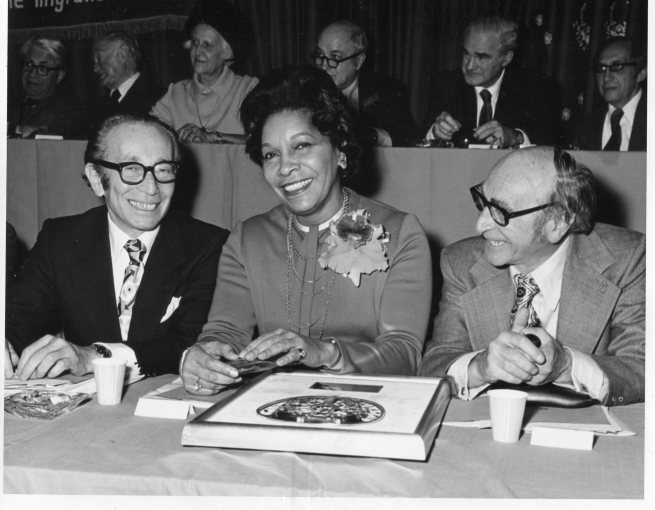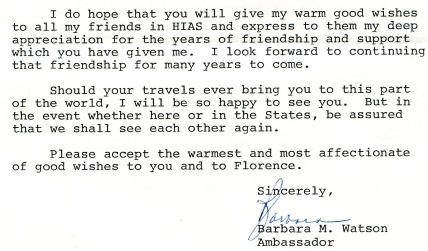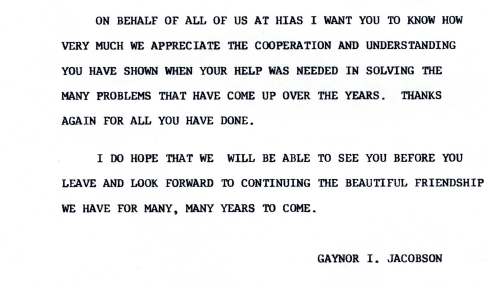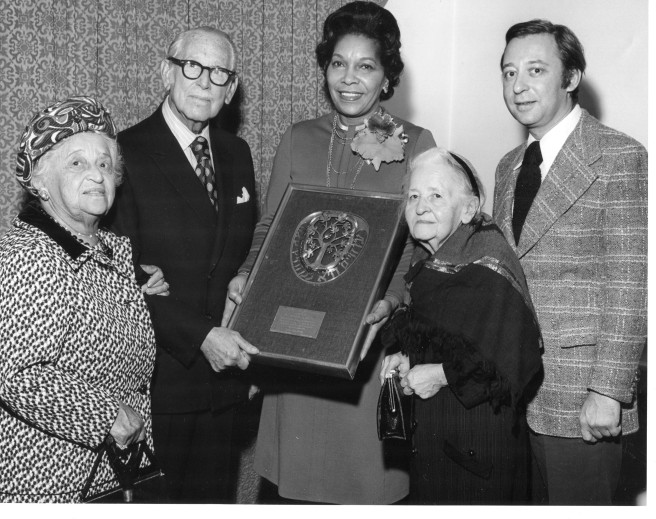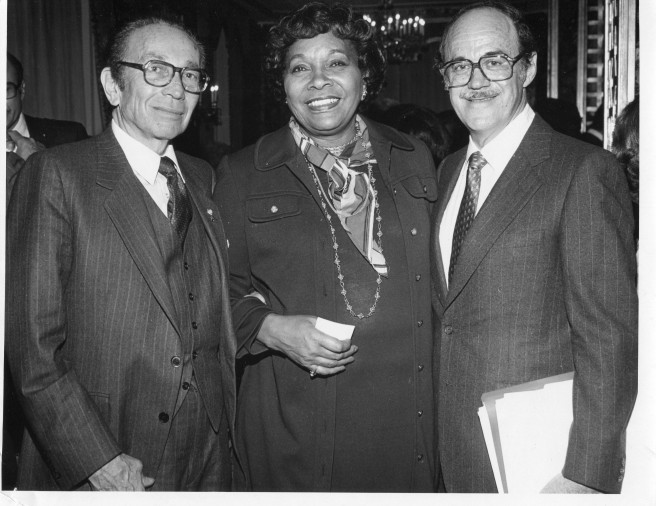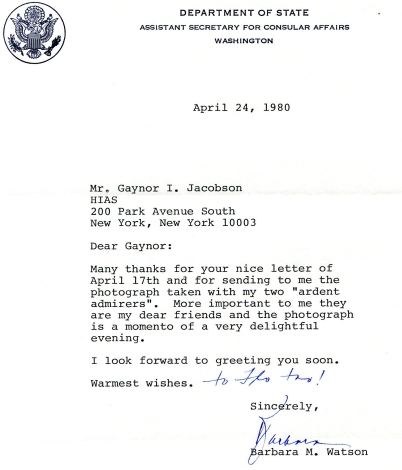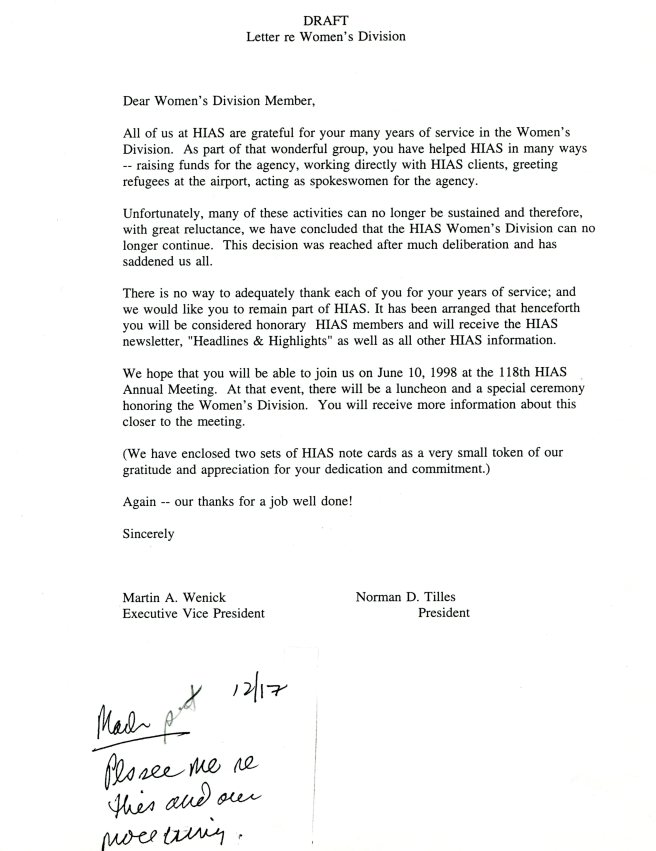In a previous post we wrote about the dedication of the Wilhelm Weinberg Hall of Records at the HIAS headquarters on Lafayette Street, in December 1958.
A press release from 1989, found in Executive Vice-President Karl Zukerman’s files during a survey of files from the 1980s before they were processed, indicates that HIAS sought in 1989 to make amends with Wilhelm Weinberg’s family for having dismantled the Hall of Records when HIAS moved to new headquarters on Park Avenue in 1965.

YIVO received many of the HIAS files in 1965 when HIAS moved to a new office without room for the voluminous administrative and client files they had accumulated over 40 years on Lafayette Street.
If you read the letter from Ilja Dijour (in the link at the beginning of this post) to James P. Rice written soon after the 1958 dedication, it is clear that in fact the “meticulous evaluation and cataloguing [sic] of records” described in 1989 had been a problem since long before 1958. In fact, according to the excerpt from the 1918 survey (in the same link to the earlier post), even in 1918 the files were disorganized and difficult to access when needed.
Many of the HIAS files that were sent to YIVO throughout the 20th century, including many World War II-era case files, have been microfilmed and cataloged or listed. The files that form the HIAS collection at AJHS will be arranged and accessible at the end of 2018.
We have created a database to many of the post-World War II case files, which will indicate whether a file exists; because of privacy issues physical access to the files depends on parameters set by HIAS. The many thousands of case files that remain physically with HIAS are in need of weeding, rearranging and eventually digitization to create easier access, and HIAS is well aware of the importance of their continuing stewardship of this valuable family history.
It’s a costly project, and after all, records management is not specifically part of the HIAS mission. It is of course not a part of any not-for-profit’s mission. Records that are not legally or fiscally required to be retained become a huge financial burden. We hope in the near future it will be possible to further organize and make accessible the remaining HIAS files, allowing for privacy restrictions as necessary.
And then the challenge is the long-term preservation of their electronic records – something we all have to think about, professionally and personally … but not today.
